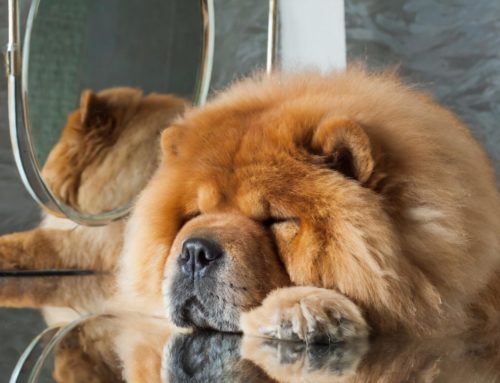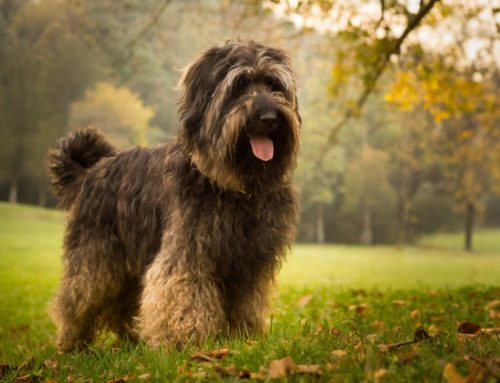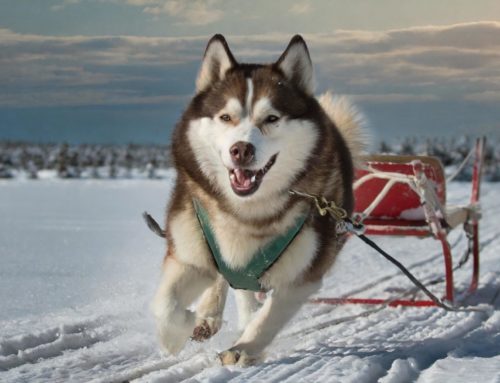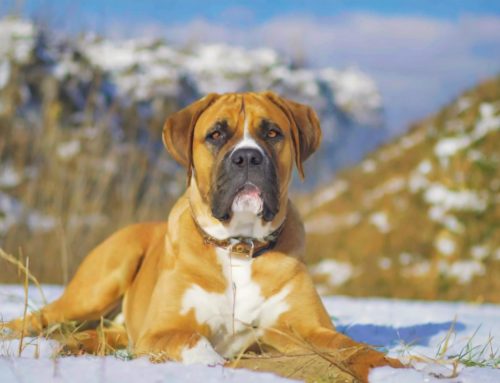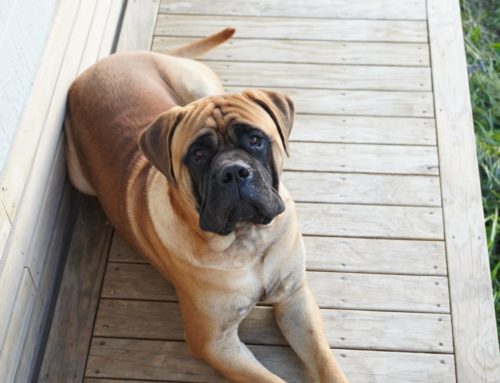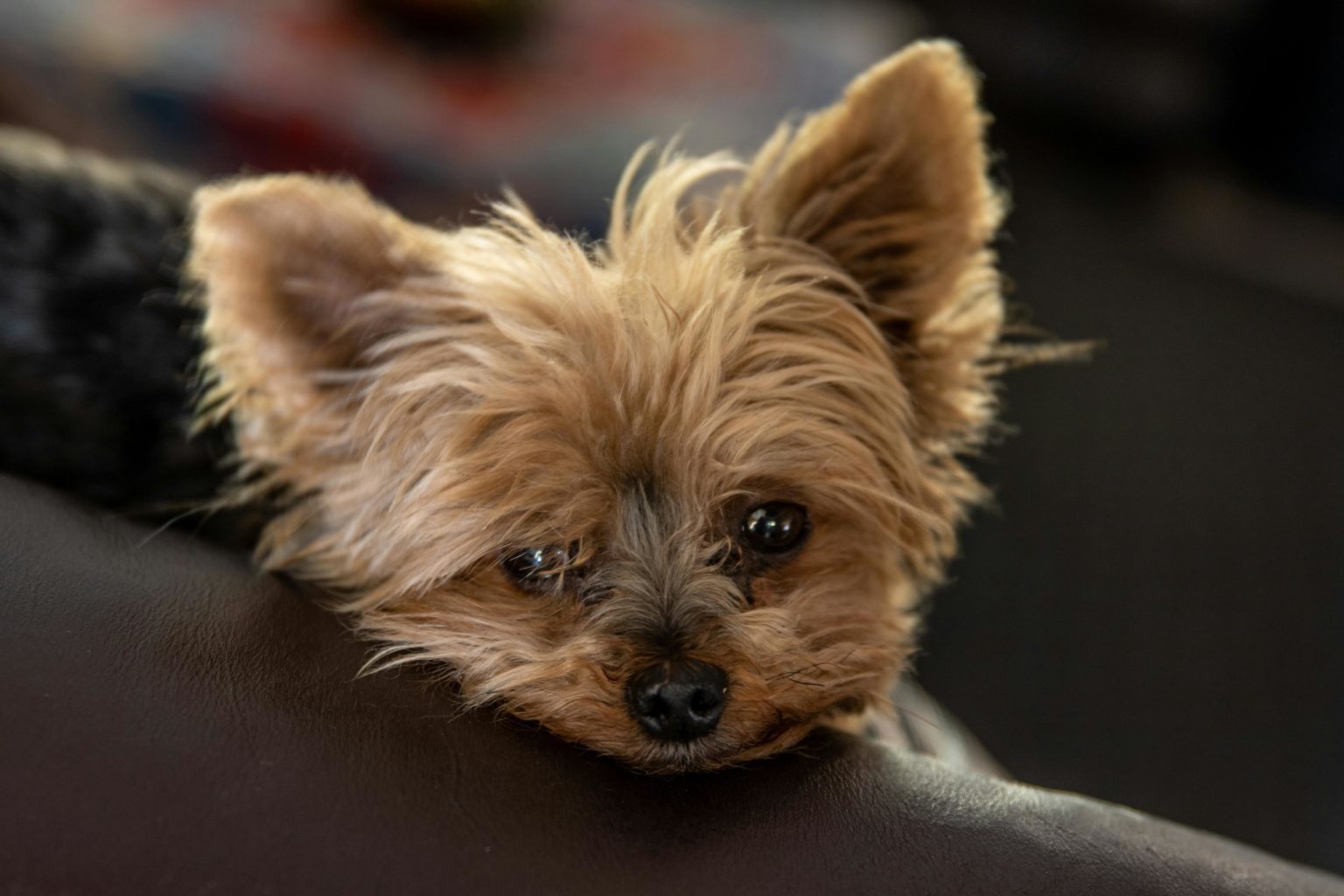
The Australian Terrier, often affectionately called ‘Aussie’, is an energetic and versatile dog breed with a rich history. This small but tough terrier was originally bred in Australia by settlers who needed a versatile working dog.
Its primary job was to chase away vermin and protect against snakes and rodents in the harsh and often dangerous conditions of the Australian countryside. This dog breed is a mix of several terriers, including the Dandie Dinmont, Yorkshire and Scottish Terrier.
This mix has resulted in a dog with a unique character and a rough, weather-resistant coat. The coat is typically sand or tan, with an undercoat that provides protection from the elements. The first Australian Terrier Club was founded in Australia, underlining the growing popularity of this breed.
These terriers are known for their affection, vigilance and ability to get along well with children, although they do not let themselves be pushed around.
Appearance and coat of the Australian terrier
The Australian Terrier, also known as the Aussie, is a small but robust dog breed with a distinctive appearance. This terrier has a shoulder height of about 25 to 28 cm and is known for its long, rough coat that should be brushed and combed regularly, ideally once a week, to preserve its natural oils and prevent tangles.
The coat, which can be both silky and rough, is often a mix of colours, including black and tan, blue and sandy. Breeders and breed associations pay attention to the overall health of the Aussie, monitoring hereditary conditions such as patella luxation.
The Australian Terrier was originally bred as a working dog in Australian gold mines and on farms, where it was used for chasing snakes and rodents, among other things.
Common hereditary diseases and disorders in the Australian Terrier
A small but resilient dog breed, the Australian Terrier is known for its lively nature and need for regular exercise. Although this breed is generally considered healthy, there are some hereditary diseases and conditions that potential owners and breeders should be aware of. This is important when caring for the Australian Terrier, both in puppies and adult dogs.
- Hereditary diseases and conditions that occur in the Australian Terrier include:
- Patella Luxation: a common condition in small breeds, in which the kneecap dislocates.
- Diabetes Mellitus: a condition that affects blood sugar levels, often manageable with diet and medication.
- Legg-Calvé-Perthes disease: a hip disorder leading to degeneration of the hip joint.
- Skin allergies: often related to diet or environmental factors.
- Ear infections: often due to the shape of the ears and the fur around the ears.
- Cataract: can lead to impaired vision and sometimes blindness.
The character of the Australian Terrier
The Australian Terrier, with its characteristic erect ears and rough outer coat, is an energetic and determined small dog. A member of the FCI breed group of terriers, this dog is known for its watchful and protective nature, making it an excellent guard dog. Despite its small size of about 25 cm, the Australian Terrier does not let its guard down, especially when it comes to protecting its family.
These terriers are extremely friendly and get along well with children, if properly socialised. Their lively and playful nature makes them a perfect companion for active families. These breeds are also known for their ability to live well with other pets and dogs, including other small breeds such as the Silky Terrier and the Dandie Dinmont Terrier.
A notable characteristic of the Australian Terrier is its determination during training. They are intelligent and learn quickly, but need consistent upbringing. They are active and need regular exercise to expend their energy. Their coat requires regular maintenance, including weekly brushing and combing, to keep their silky coat in good condition.
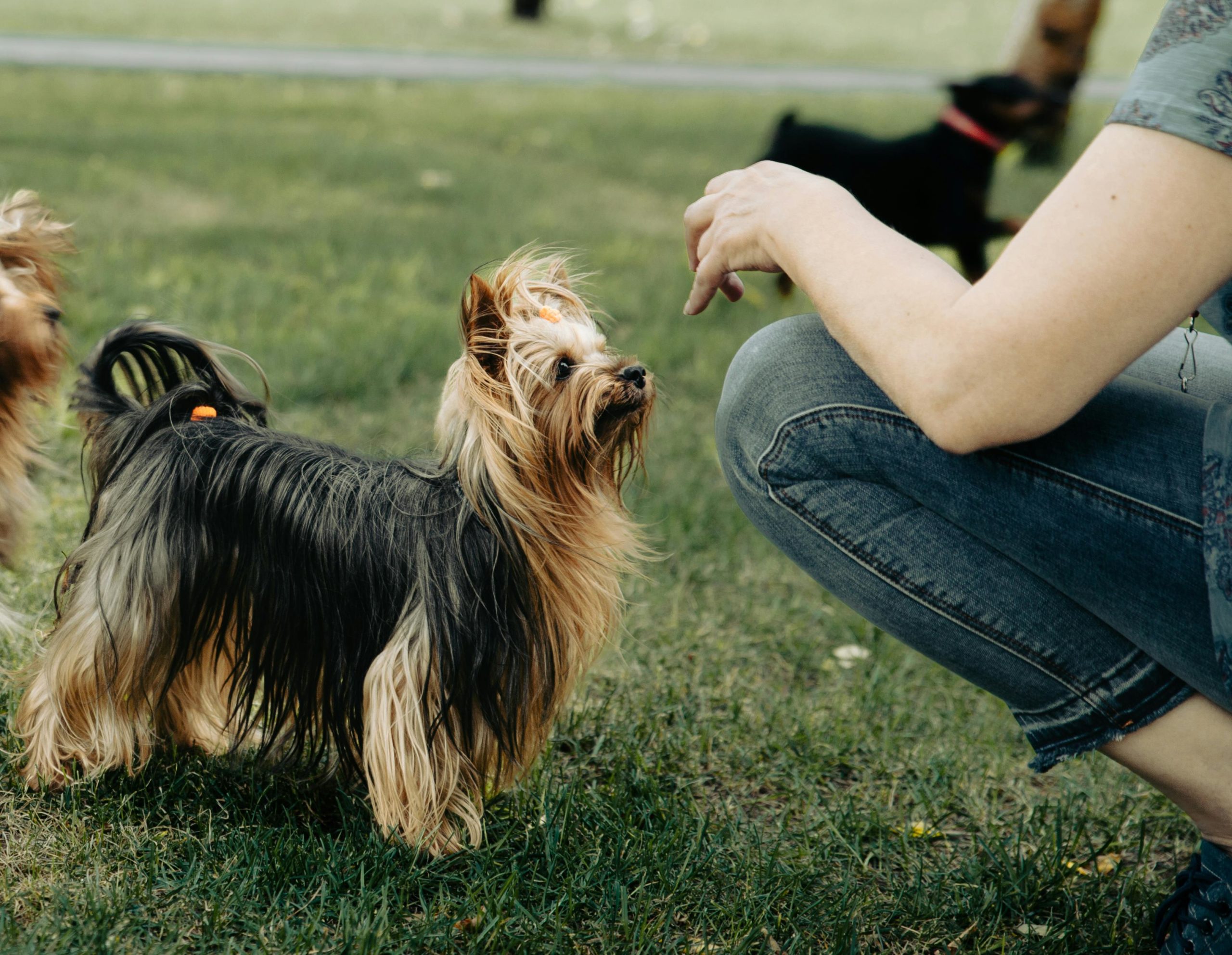
The Care of the Australian Terrier
The Australian Terrier, also known as the Aussie, is a small but sturdy dog that requires regular grooming to stay healthy and happy. This purebred terrier is known for its lively nature and is very friendly to children and other pets.
It is important to note that the Australian Terrier sheds regularly. Therefore, its coat should be brushed and combed thoroughly at least once a week to remove loose hairs and disperse the skin’s natural oils. These terriers are not the biggest dogs, with an average shoulder height between 25 and 30 cm, but they have an energetic temperament and love dog sports.
Good grooming and regular exercise are essential for these dogs. It is also important to consider hereditary health problems. A good breeder will provide information about the health of the parent dogs.
Socialisation and upbringing of the Australian Terrier
A small but lively breed of dog, the Australian Terrier requires careful socialisation and upbringing. These dogs are known for their courage and cheerfulness, making them a popular choice for families.
It is important to socialise the Australian Terrier from an early age, especially with children and other pets, as the breed has a strong personality. Members of a Terrier Club can offer valuable tips and support for raising these dogs.
Despite their small size, Australian Terriers are active and energetic. They need regular exercise and love to play, which helps to release their energy and promote good behaviour. As with all breeds, it is important to brush and comb the Australian Terrier regularly, especially as they shed.
This not only helps keep their coat healthy, but also promotes bonding between dog and owner. Australian Terriers are intelligent and learn quickly, but they can sometimes be stubborn. Consistent upbringing with positive reinforcement is the key to success. They have an upright posture and a flat skull, typical characteristics of the breed.
How much experience does an Australian Terrier require
The Australian Terrier, with its lively and confident nature, is an excellent choice for both experienced and less experienced dog owners. This breed is known for its intelligence and adaptability, which makes training relatively easy. However, due to their sometimes stubborn nature, some dog training experience may be helpful.
These terriers respond well to positive reinforcement and consistent training. Their small size makes them manageable, but they do require regular physical and mental stimulation. Exercise is necessary for these energetic dogs, so daily walks and playtime are essential.
Although the Australian Terrier generally gets along well with children and other pets, early socialisation is crucial to ensure they become well-adjusted adult dogs. Their grooming is fairly simple; weekly brushing and combing is enough to keep their coat in good condition.
Is training necessary?
Training is absolutely necessary in the Australian Terrier, an intelligent and energetic breed known for its lively and sometimes stubborn nature. These terriers, although small in stature, have a strong sense of independence and can exhibit stubborn behaviour without proper training and guidance.
Positive reinforcement works best when training an Australian Terrier. This breed responds well to rewards and prizes, which facilitates the learning process. Consistency is crucial; clear and repeated commands help the dog learn quickly and avoid confusion. These terriers enjoy mental challenges, so training sessions can also be used as a way to stimulate their minds.
This can include learning tricks, agility training or problem-solving games. In addition to basic obedience, it is also important to socialise them, especially from a young age, to ensure they interact well with other dogs, animals and people.
How much exercise does an Australian Terrier need?
A lively and energetic dog, the Australian Terrier needs a moderate amount of exercise daily to stay healthy and happy. As a breed originally bred for chasing vermin and herding livestock, this terrier possesses a natural desire for activity and mental stimulation.
A daily walk of about 30 to 45 minutes, combined with a few short play sessions, is usually sufficient for an Australian Terrier.
These walks are not only good for their physical health, but also provide an excellent opportunity for mental stimulation and socialization. It is also advisable to keep them involved in interactive games such as fetch, agility exercises, and puzzle toys to keep their minds active. These activities help prevent boredom and destructive behavior.
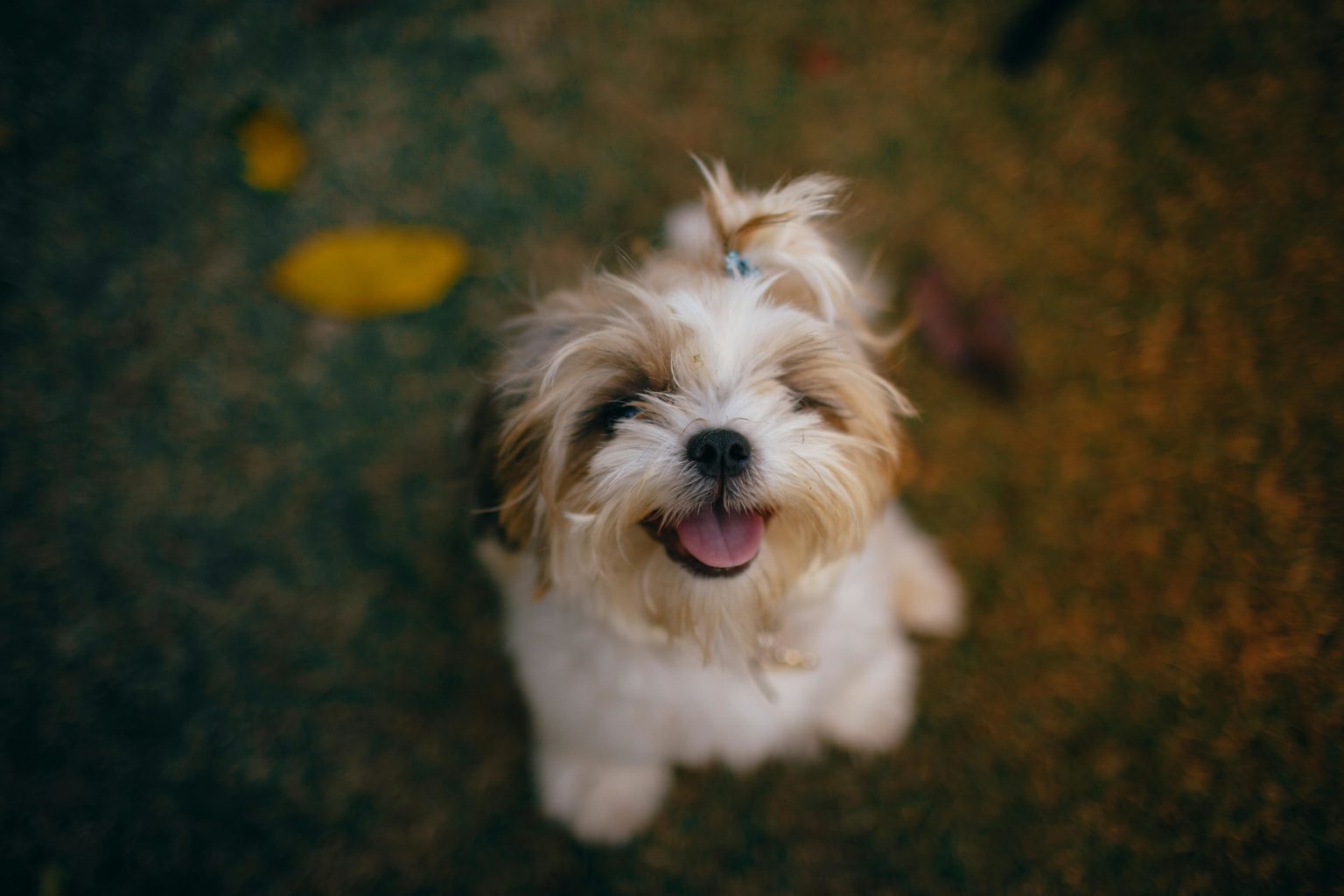
How is it getting along with children?
The Australian Terrier is known as a friendly and lively dog that usually gets along well with children. Its playful nature and medium-sized size make it an excellent companion for older children who know how to treat dogs respectfully.
It is important to stress that, as with any dog, interactions between the Australian Terrier and children should always be supervised, especially with younger children. This breed can sometimes be a little rambunctious in play, which can unintentionally lead to minor mishaps.
These terriers value their own space and can sometimes be a bit independent. It is therefore essential to teach children to recognise and respect the dog’s signals when it needs rest or alone time. Early socialisation and consistent dog training, combined with teaching children how to interact safely and respectfully with dogs, will lay the foundation for a harmonious relationship.
Benefits of an Australian Terrier
- Size: Its small size makes it suitable for both flats and houses with gardens.
- Temperament: These terriers are known for their lively and courageous nature. They are often cheerful and energetic.
- Loyalty: They are very loyal to their family and make excellent companion dogs.
- Care: Their coat requires relatively low maintenance compared to other breeds.
- Health: They are generally a robust and healthy breed.
Disadvantages of an Australian Terrier
- Territorial Behaviour: They can be territorial, which can sometimes lead to barking or aggressive behaviour towards strangers and other dogs.
- Energetic: They need a lot of exercise and mental stimulation, which can be a challenge for less active owners.
- Stubbornness: Their independent nature can sometimes make training challenging.
- Getting along with other pets: Care should be taken when introducing an Australian Terrier to other pets, especially smaller animals.
How old an Australian Terrier gets
The Australian Terrier is known for its longevity and robust health, which is one of the attractive features of this breed. On average, an Australian Terrier lives to be about 12 to 15 years old. However, with proper care and a healthy lifestyle, some individuals can live even older.
Price of an Australian Terrier
The Australian Terrier is well-liked in the US, making it easier to find and purchase compared to some less common breeds. Here’s what to know:
Australian Terrier Pricing in the US:
- Typical Range: The price for an Australian Terrier puppy usually falls between $1,000 and $1,800.
Factors Influencing Price:
- Breeder Reputation: Puppies from esteemed breeders known for their champion bloodlines are typically more expensive.
- Pedigree: Registered Australian Terriers with the American Kennel Club (AKC) cost more than those that are unregistered.
- Location: Expect higher prices in regions with a more expensive cost of living.
- Age: Puppies are generally more costly than adult Australian Terriers.
- Coat Color: Rarer coat colors may carry a slight premium.
Similar Breeds Worth Considering:
For fans of the Australian Terrier’s vibrant character and compact size, consider these related breeds:
- Rat Terrier: Known for their agility and friendly disposition, with prices ranging from $800 to $1,500.
- Jack Russell Terrier: A dynamic and playful breed, usually priced between $800 and $1,500.
- Smooth Fox Terrier: Recognized for their smart, active nature and smooth coat, typically ranging from $800 to $2,000.
- Miniature Schnauzer: An intelligent breed with a unique coat, prices range from $800 to $2,000.
Additional Advice:
- Thorough Research: Australian Terriers are spirited with a typical terrier tenacity. Confirm their personality suits your household.
- Visit the Breeder: Inspecting the breeding environment and meeting the puppy’s parents can offer insights into the pup’s health and behavior.
- Training and Socialization: Early training and social interaction are crucial for mitigating potential issues like excessive digging or barking.
- Active Lifestyle: These terriers thrive with daily physical and mental engagement.
Remember: Opting for a pet is a serious, enduring responsibility. Ensure you choose a breed that matches your lifestyle and can be a joyful addition to your home for many years. Exploring breed clubs or kennel directories may aid in finding reputable Australian Terrier breeders. Shelters and rescues are also worthy of consideration for finding terriers or mixed breeds that could seamlessly integrate into your family.
